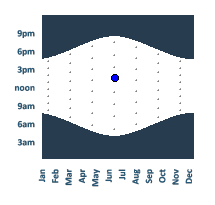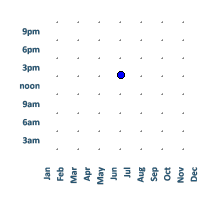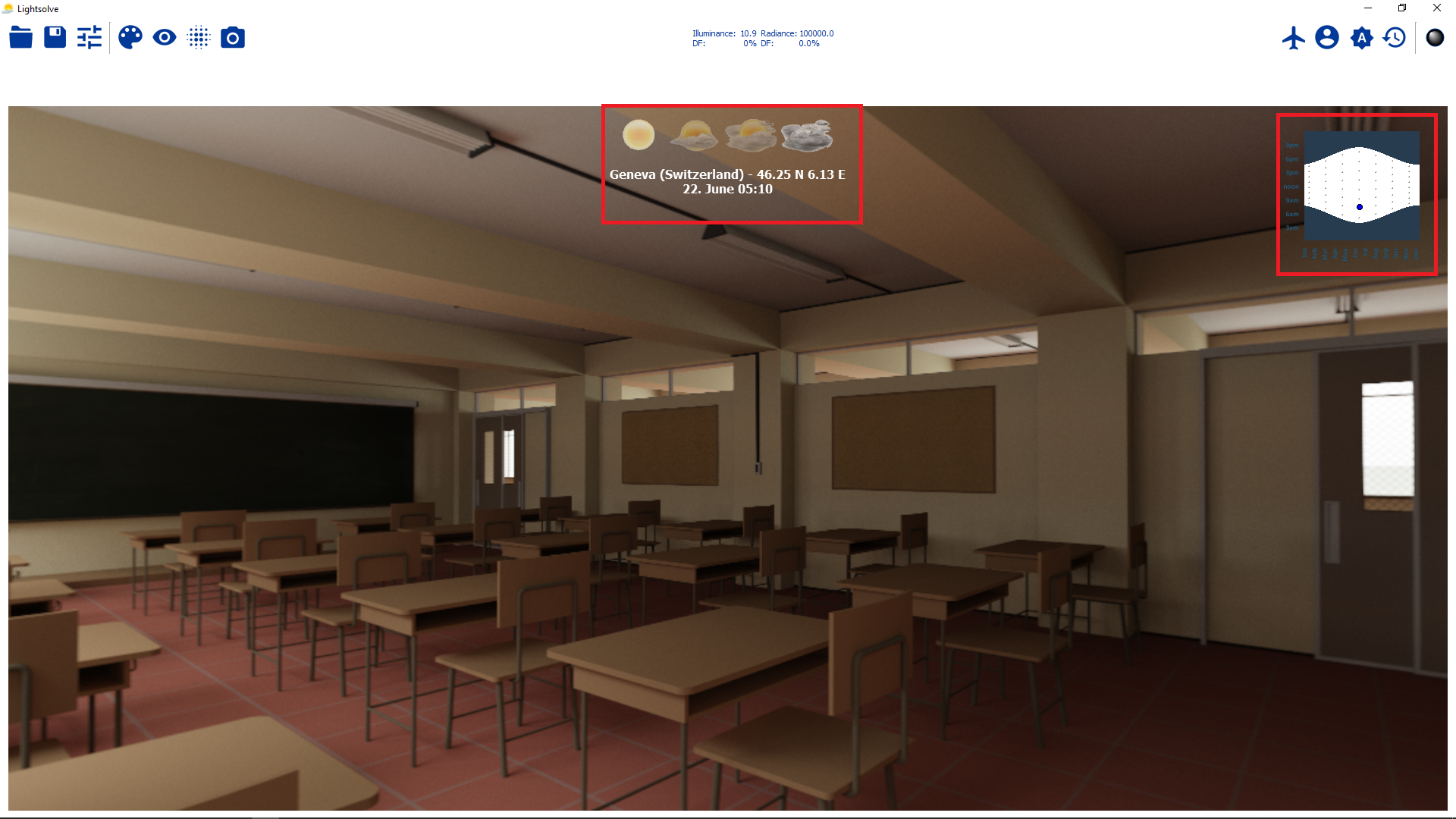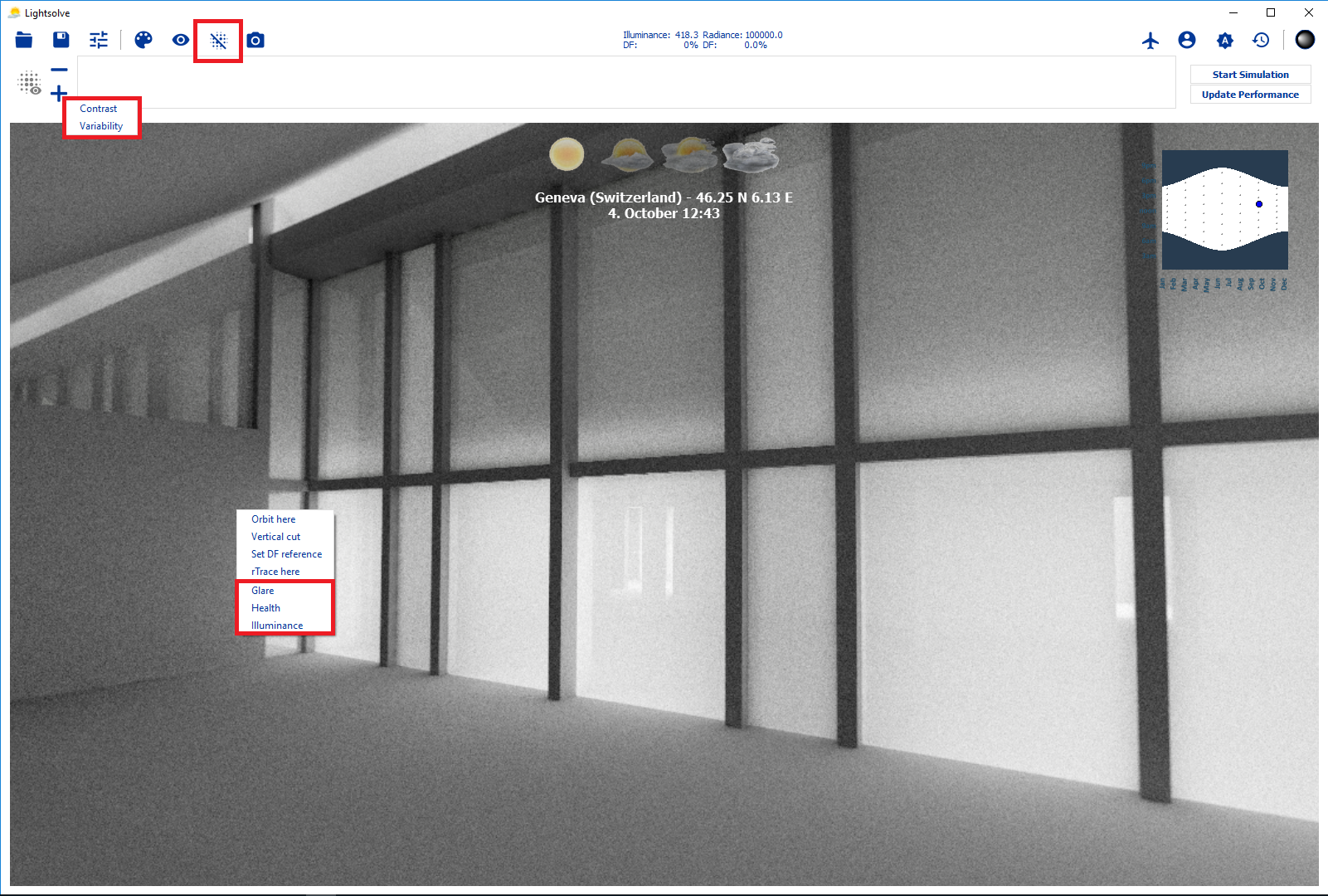- français
- English
Definition of moment, sky and sensor
Our lab's researches are based on illuminance levels over surfaces, luminance at eye level and the dynamics of the light in the space.
Moments
Lightsolve allows to define how the year is split into representative moments and how these moments are distributed over the day and year. In practice, the representative moments are a rectangular matrix of size DxY. There are D representative moments in a day and Y in a year, the user can finally decide if these moments are distributed evenly over the 24 hours or to concentrate them over the daylit hours. In the first case, the time between two distinct moments in a day is constant, in the second it depends on the length of the sun day.
The images below explain this concept clearly.
In terms of performance, a moment will not represent an instant situation but a weighted average over some days and hours before and after the representative moment. In other words, the moments are a couverture of the year rather than a sampling.


Skies
The simulation is based on the location. Lightsolve includes a database of hundreds of locations with a complete representative year of weather statistics. There are basically 4 types of skies:
Clear, Clear Turbid, Intermediate and Overcast (CIE model).
The weather statistics are used as a reference to adjust the sky models to the typical location's weather when computing luminance/illuminance. When computing performances, a moment of the year will be represented by a probability for each sky type: the probability will be computed as a linear combination of the skies of each hour and day

Sensors
The sensors can be either surfaces (illuminance sensing surfaces) or points of view (from where to measure the luminance at eye level). In both cases the results are evaluated for each moment and for each sky.
For example, for 7x8 moments, a point of view sensor will need to trace 7x8x4 = 224 images.
Similarly, a surface sensor will need to trace 7x8x4 = 224 matrices of illuminance values.
As you understand, the numbers grow quickly: let the scientist in you suggest you reasonable numbers, starting from low resolutions and increasing if there is more time is much wiser than the opposite.

- Ce wiki
- Cette page
